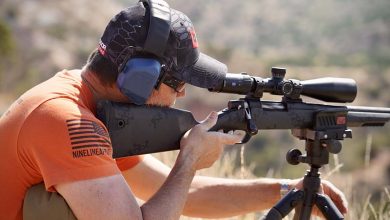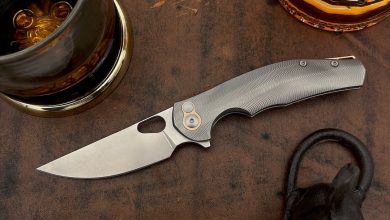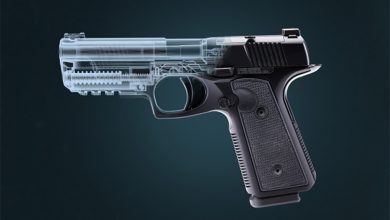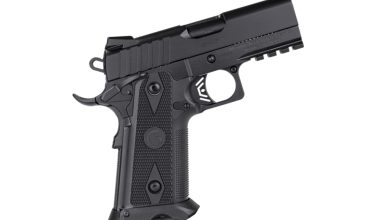America’s Sweetheart: The Radical Evolution Of The AR-15

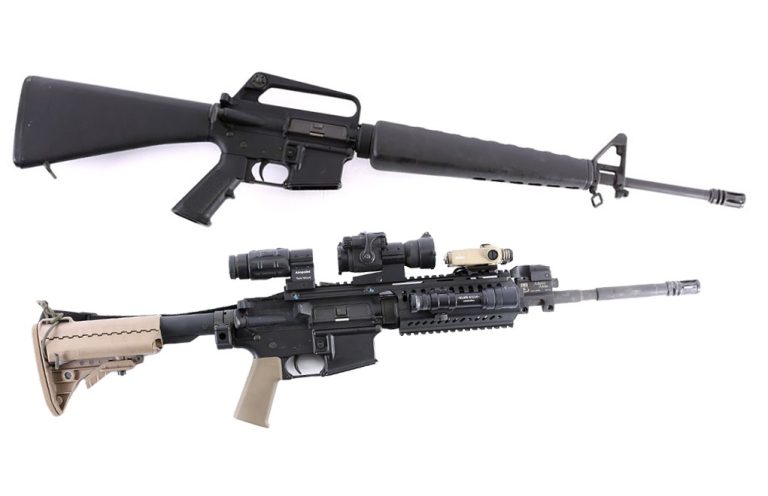
We discuss the history of the AR-15 and look back at just how radically it’s evolved over 60 years later.
New shooters and gun buyers can be forgiven for thinking the AR-15 has always been the way it is. Nope. It’s had more than a half-century of growth, modification and upgrades.
The history of the platform is long and storied. Buckle up.
Tripping Out of The Gate
In the beginning, there was the Colt SP1. This was a rifle with a fixed stock, a triangular handguard around a 20-inch barrel, a carry handle and sights that needed a tool to adjust them. The barrel was skinny, and the twist it had was one turn in 12 inches—suitable only for 55-grain FMJ bullets.
The time? 1967. And the Colt had an MSRP of $195. (In 2022 bucks, that comes to $1,650.) The shooting public wasn’t impressed. The world, hunting and tactical, was still dominated by .30-caliber rifles, such as the M14 or FAL, and hunting done with Winchester (a Model 94 ran $85, a Model 70 cost $150) or Remington (M700, $130) bolt guns in .30-06. The few varmint shooters that existed weren’t at all interested in a self-loading rifle.

The teething problems that happened with any new rifle of the day were worked out, much to the detriment of those involved, in the jungles of Vietnam. This is the origin of many of the myths you’ll read about the “unreliable” AR-15, M16 and M4.
The jungles also called for a variant, the “Commando,” which ended up being a carbine with a barrel of 11.5 inches and a sliding stock that could be made shorter for storage and transport. During this time, and the next decade-plus, you could buy your Colt any way you wanted, provided it was black, an SP1—take it or leave it. Oh, the semi-auto variant of the Commando might be in the catalog, with its 16-inch barrel … but good luck finding one.
Uncle Sam eventually boogied out of Vietnam, and there was a time where nothing happened. Then, in the 1980s, the USMC, tired of a rifle that didn’t do what they needed, designed an improved M16 (and the AR-15 goes with it) to serve their needs. It got a click-adjustable for range and windage rear sight and a marginally heavier barrel. The big change was the twist, jumping to one turn in 7 inches, to stabilize the new, heavier bullet with a steel tip, the SS109, known now as the “green tip” round.
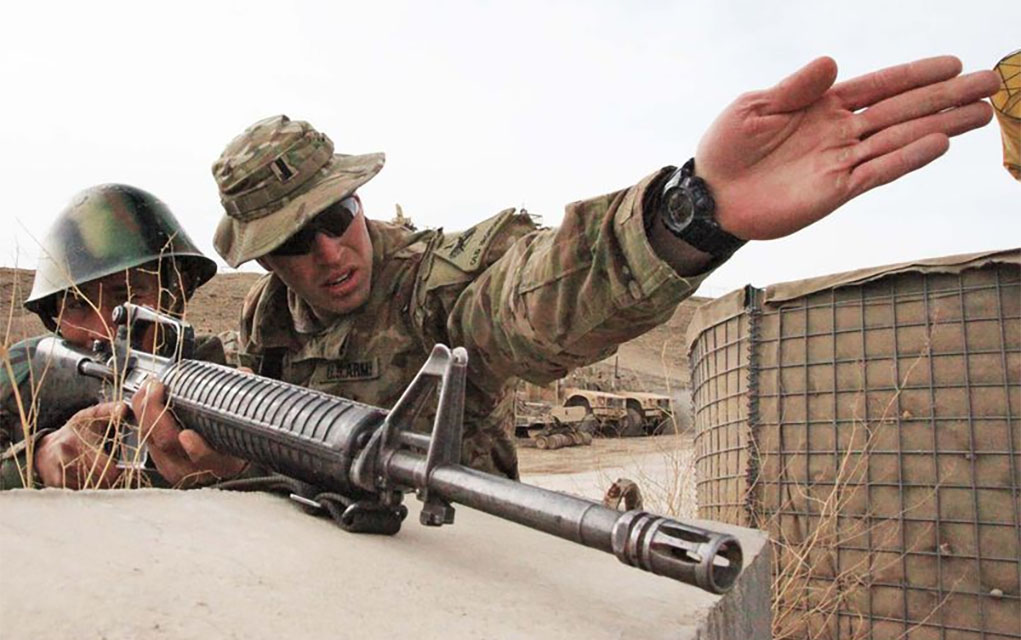

While this was happening, along with 1980s fashion and music, the political world was in upheaval. Many politicos went after “assault weapons,” which were exemplified by the AR-15. Its all-black ensemble made it easy to demonize. There had already been a slow boil of builders, experimenters and competition shooters who were upgrading the AR-15, but politics kicked that into high gear.
Suddenly, where there had been Colt and one or two others, you could buy bare AR-15 lowers and build up what you wanted.
And shooters did.
The Colt Effect
The new sport of 3-gun shooting was getting up and running, and you couldn’t win with a .30 rifle. If everyone else also had an AR-15, then whoever had one built best for competition would win.
So, everyone built.
And while everyone was building, bottlenecks arose, although they weren’t in barrels or other parts: The upper receivers and the handguards were the problem. We were stuck with the fixed-sight uppers, the A1 and A2, and plastic handguards. The fixed-sight uppers made it really difficult to mount optics of any kind.
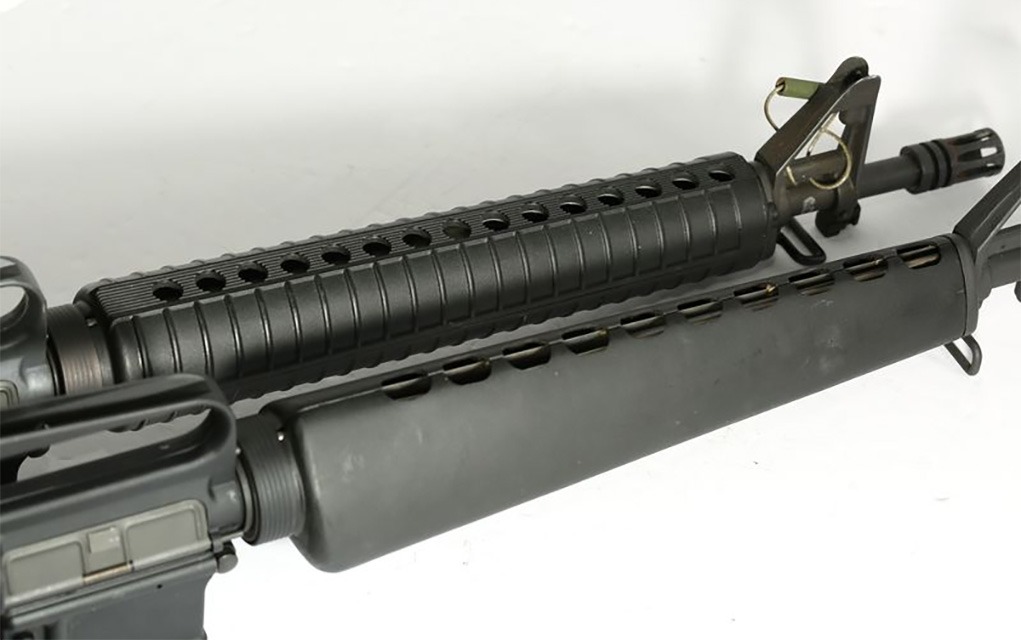

The only way to get a barrel free-floated was to use an aluminum tube handguard … and they were heavy. They also heated up and, once hot, took a long time to cool. Colt solved the problem of sights and optics when they adopted the “flat-top” receiver in the early 1990s.
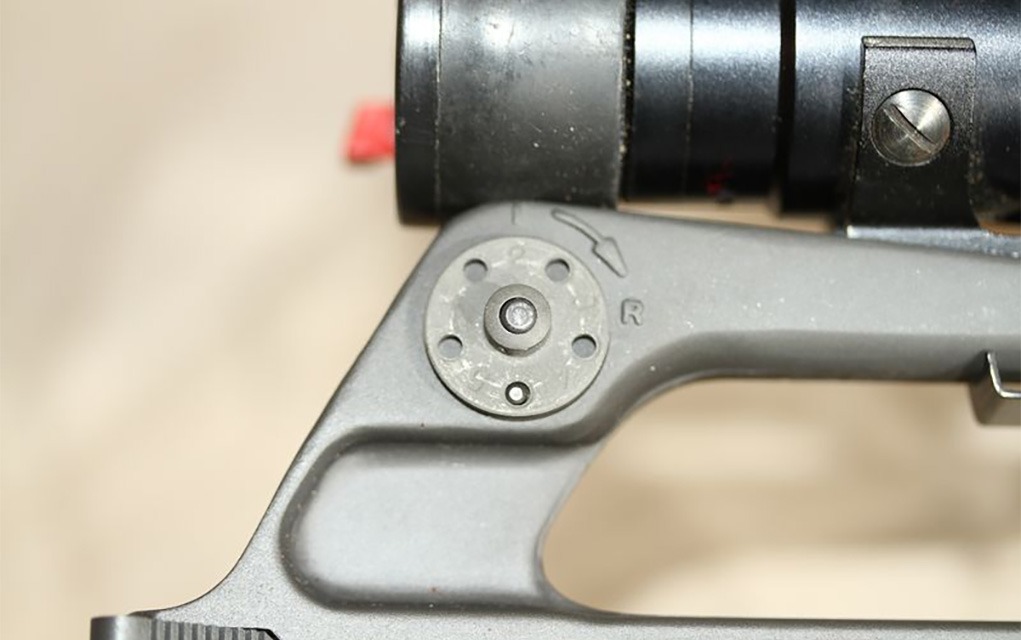

This was an outgrowth of the ACR (Advanced Combat Rifle) program, and part of the Colt development of the M4. Gunsmiths had been making flat-tops before, but to do it required radical surgery. Someone had to chop off the carry handle, then pin, epoxy or bolt on a Weaver rail and attach a scope to that.
With Colt making uppers, shooters no longer had to do that. But there was a fly in ointment: Colt. Their parts were expensive, and the only way anyone could lay hands on a flat-top upper was—you guessed it—by buying a Colt rifle. Worse yet, the Colt uppers and lowers were made in the Colt “big pin” configuration. The front takedown pin was larger in diameter than the mil-spec parts, and Colt refused to change.
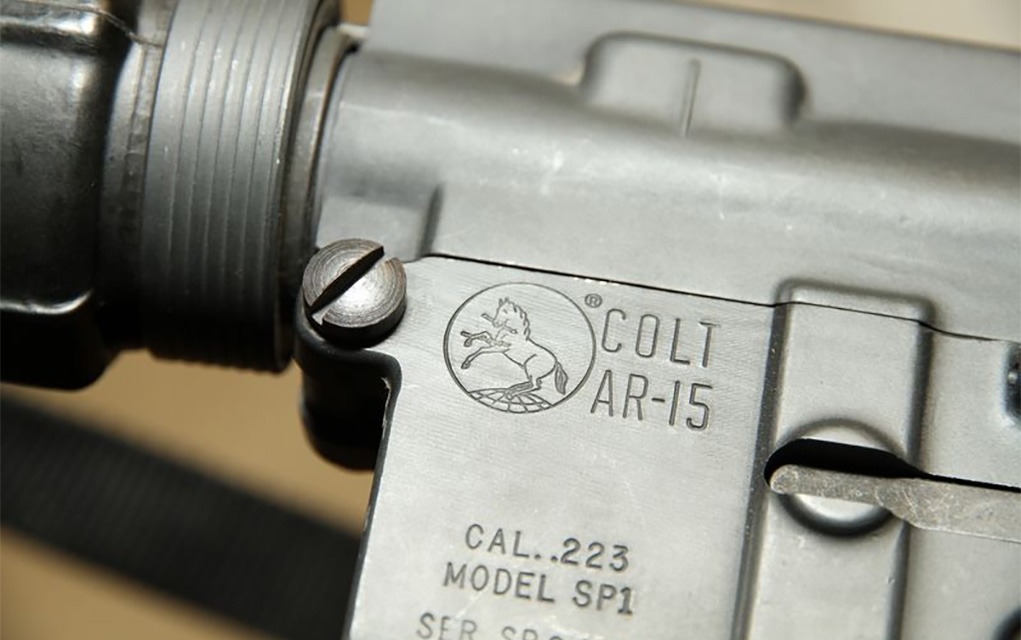

If You Build It … You Must Accessorize
The makers of the non-Colt lowers looked at this and started making uppers as well, and in the regular takedown pin diameters so they’d work on all other lowers. In short order, it was possible to own an AR-15 where no single part of it had seen the inside of the Colt factory.
While this was going on, the government found out that bolting extra gizmos to a rifle made it more versatile. They needed a way to attach lights, lasers, extra optics and a cup holder to the M4 and M16A2/A3/A4.
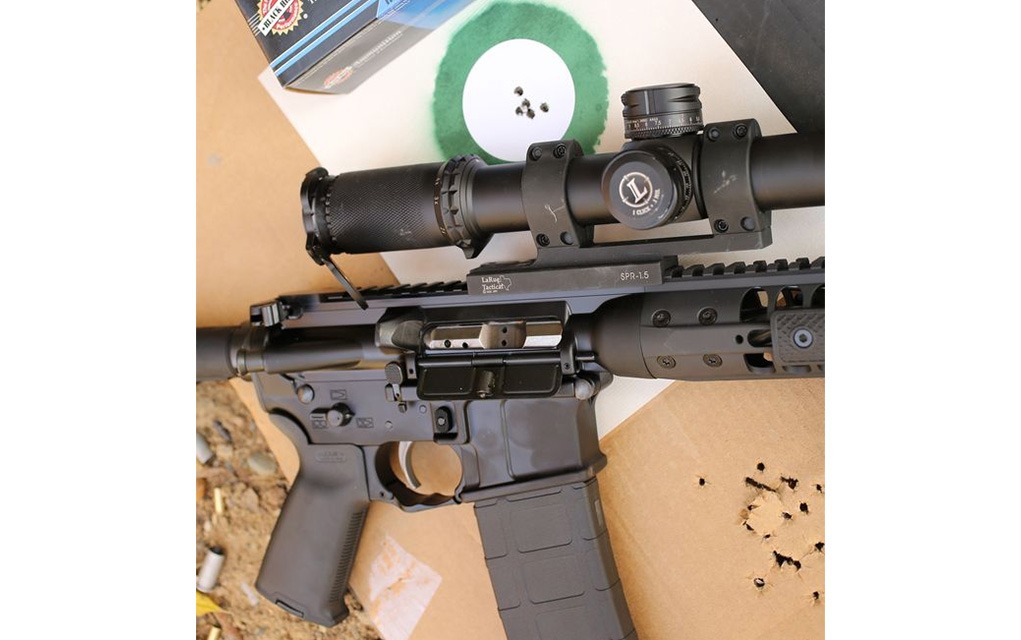

Next thing you knew, we had “quad rails.” This is a handguard with a slotted rail (the same dimensions as the top rail on the receiver, by the way) at the four cardinal points: top, bottom, left and right. It fits into the regular handguard locking parts and allows adding extra tactical tools. It also makes the handguard fat, edgy and heavy. Oh, and hot … because it’s made of aluminum. (Did the government ask 3-gun shooters about the heat problem? Of course not.)
Competition shooters led the way. From tubular handguards made of carbon fiber (cool in temp, cool in looks and cool in price, but oh-so-light) to free-float handguards with the rails shaved off. The first of those I saw was exactly that: a quad-rail handguard that the shooter had used a milling machine to cut the rails off and make it ergonomic.


While the free-float rail revolution was going on, there was another explosion: billets. The original AR is made from forgings. Billet uppers and lowers are made from pre-hardened blocks of aluminum, where, in the words of Michelangelo, “everything but the receiver is cut away.” Before CNC machines, this wasn’t easy. But with a CNC machine, it’s as simple as locking blocks in the fixture and pressing “go.”
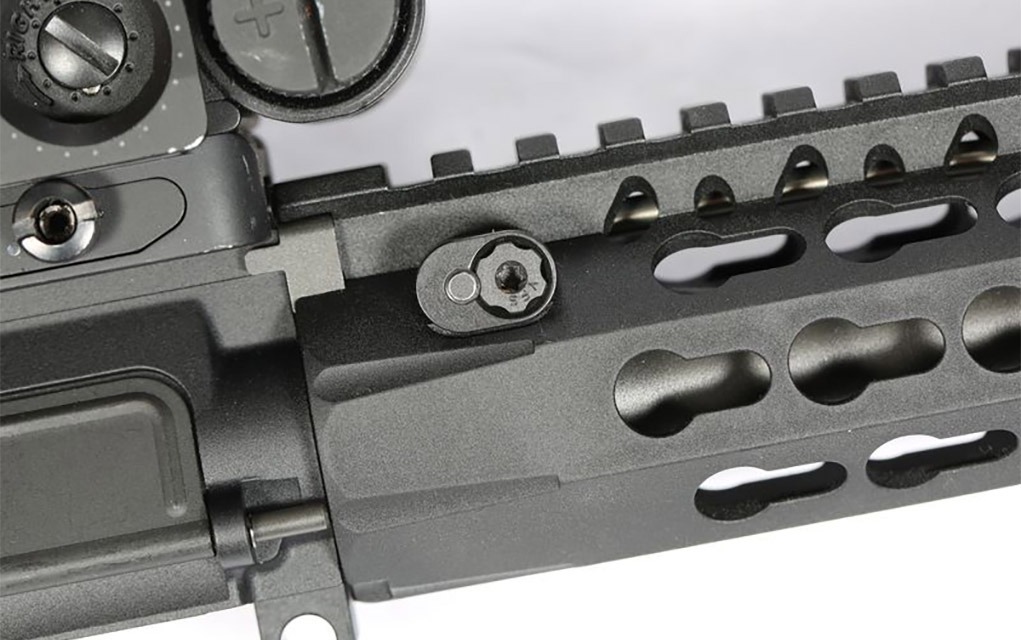

The problem with doing away with quad rails: How do you attach the desired accessories? The first step was known as a KeyMod. Here, the tube of the handguard has keyhole-shaped slots cut into it, and you attach sections of rail where you need them. This was grand. The next step, known as M-lok, does away with the rail. The M-lok slot accepts the locking points that are built into the accessory itself. This does require that the desired accessory be made with M-lok points on it, but with modern CNC manufacture, this is a small consideration.
The Tactical Times
Before the War on Terror, use and development of the AR-15 was competition-focused to almost exclude defense and military. When I went to Gunsite to take the 223 Class, I had to search my rifle rack to find one that was vanilla-plain enough to use. Designers were intent on ever more obnoxious muzzle brakes to tame the “recoil” of the .223 Remington.
Then, almost overnight, muzzle brakes were secondary, and suppressors moved to the fore. No one wanted a rifle—or even a competition AR—with an 18-inch barrel. Everyone wanted carbines with 16-inch barrels, lights, lasers and a tactical sling. When manufacturers cracked the code of how to make an AR-15 pistol work properly, and arm braces suddenly materialized, AR pistols became the new thing. The percentage of AR pistols to others now is 10 times what it used to be.
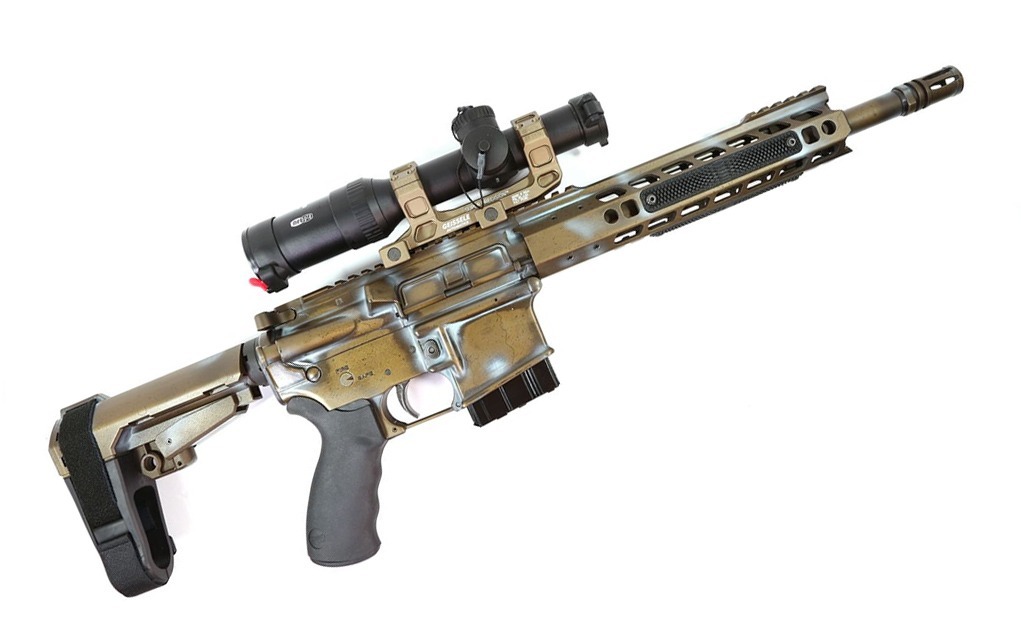

Oh, and as almost an aside, since the top rail of the receiver could easily accept optics, optics makers and mount makers got busy making better and better mounts and scopes for your aiming use. The optics of today are almost the Hubble telescope compared to what was being used in 3-gun in the 1990s. And in the 1990s, only the spec-ops units with unlimited budgets and ability to use what they wanted to were even using red-dot optics.
One thing that the Global War on Terror did do for us, besides greatly jacking up the price of ammo, was to push down the price of exotic optics. Night-vision optics and thermal viewers dropped by an order of magnitude. You can now see in the dark for what a really good just-glass scope used to cost—which came just in time to start whacking feral hogs in the night with great enthusiasm.
The last step on the AR-15’s evolutionary ladder came in calibers. There’s a lot you can do to stretch the capabilities of the .223/5.56, but even it has limits. In the early 2000s, it was rare to find other calibers. Now? All the rimfires, every centerfire from the 5.7FN up to a slew of .50 cartridges, can be found in the AR-15 or the AR-10.
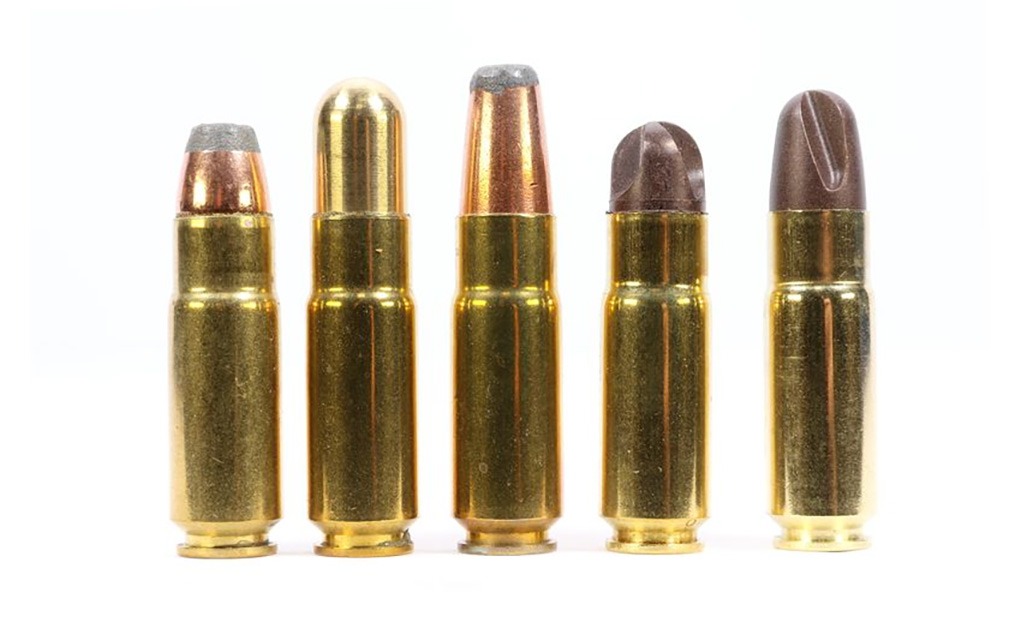

Where .223 was once the norm, and the odd shooter had one built in 7.62x39mm, now it seems like half the brass you find at the range is .300 Blackout. And, without looking closely, you can’t be sure that the .223-looking brass you find isn’t .204 Ruger or something else close based on a .223 case.
Onward and Upward
If, in 1967, you had laid this out as the place the AR-15 would be in the 2020s, people would’ve laughed. Heck, I would’ve laughed. Even as late at the Y2K panic (look it up), the AR-15 universe wasn’t so far along that someone who had only seen it at the start could nod and go “OK, I get it.”
We’re now in the Golden Age of the AR-15. You can have it in any color, camo pattern, left-hand as well as right (that change happened back in the early ’00s), barrel length, caliber and put any scope, night-vision, thermals, red-dot, on top.
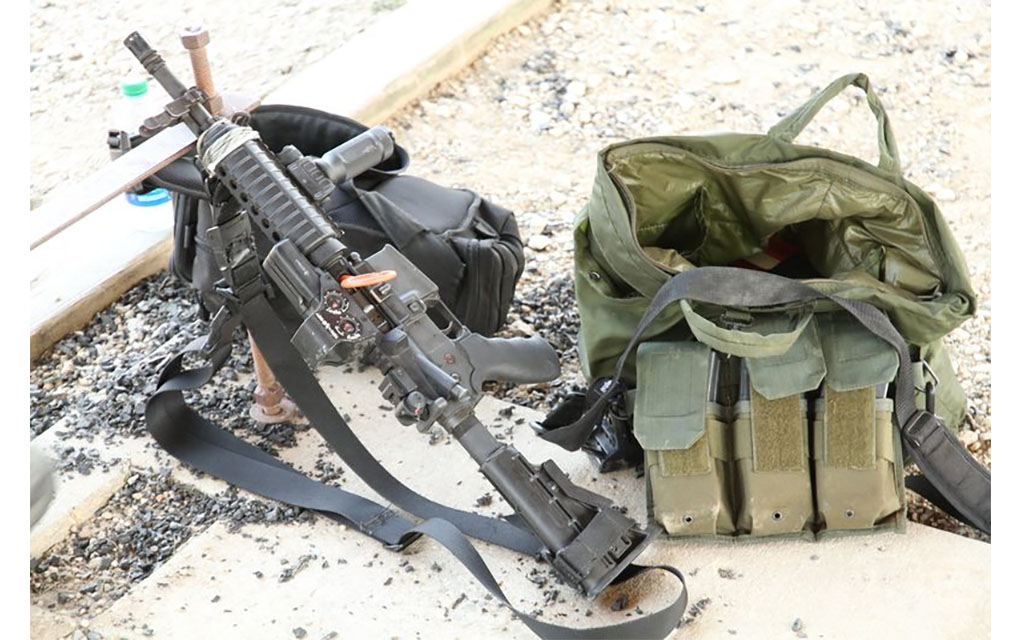

Oh, and one last thing: volume. In a good year in the past, Colt used to make a couple of hundred thousand AR-15s for the commercial market. Some years, less—a lot less. Now, the AR-15 is the biggest-selling rifle in America, and it isn’t even close. When there hasn’t been some social nonsense that generates a buying frenzy, you have an embarrassment of riches when it comes to buying an AR-15 … or building the one of your dreams.
Colt isn’t the biggest seller anymore, either—not even close. So much for, “Any way you want it, as long as it is an SP1.”
Editor’s Note: This article originally appeared in the June 2022 issue of Gun Digest the Magazine.
More Retro AR-15 Stuff:


Next Step: Get your FREE Printable Target Pack
Enhance your shooting precision with our 62 MOA Targets, perfect for rifles and handguns. Crafted in collaboration with Storm Tactical for accuracy and versatility.
Subscribe to the Gun Digest email newsletter and get your downloadable target pack sent straight to your inbox. Stay updated with the latest firearms info in the industry.



